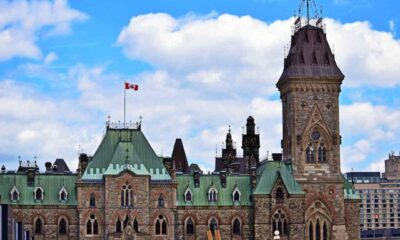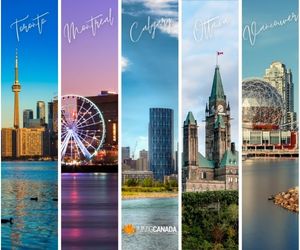Immigration Announcement
Canadian Ministers Offer Update on Key Goals

The Forum of Ministers Responsible for Immigration (FMRI) held its midterm meeting in Halifax to discuss Canada’s immigration priorities. The FMRI is made up of federal, provincial, and territorial ministers responsible for immigration, and meets twice per year to discuss immigration issues.
At their last meeting in July 2022, the ministers aimed to maximize the effectiveness of the immigration system by increasing provincial and territorial (PT) involvement in the selection process, providing more input into Express Entry modernization, increasing allocations of the PT Nominee Programs (PNPs), and providing timely multi-year allocations before March 31st, 2023.
Multi-Year Provincial Nominee Program (PNP) and Atlantic Immigration Program (AIP) Plan
In the recent meeting, the ministers discussed their progress towards these goals and endorsed the first-ever new multi-year PNP and Atlantic Immigration Program (AIP) plan. This plan will allow provinces and territories to outline their immigrant admissions and settlement in advance and increase PNP allocations by 44% for 2023. The ministers also discussed ways to enhance the process of obtaining an Educational Credential Assessment (ECA) or foreign credential recognition to help immigrants practice their professions at their full potential.
The ministers acknowledged the challenge of finding affordable housing for new immigrants and the stress on settlement services nationwide. They are also looking to reduce duplication in the system, which contributes to the backlog, and to speed up processing times.
Since Canada’s founding, the provincial and federal governments have shared responsibility for immigration, and one of the main components of this shared responsibility is the PNP. Each province, with the exceptions of Quebec and Nunavut, operates its own PNP through which candidates for permanent residency (PR) can indicate a preference to work and live in a specific province. If the provincial government believes the candidate can easily integrate into the workforce and support the provincial economy, they may offer them a provincial nomination.
Getting nominated does not automatically mean the candidate is a permanent resident, but it can strengthen their application to the federal government. Each year, IRCC outlines the national PNP admissions target and communicates individual PNP targets to each province and territory.
The ministers are committed to enhancing Canada’s immigration policies and programs through partnership, collaboration, and a shared vision. Through their meetings, they aim to clarify the roles and responsibilities of the federal, provincial, and territorial governments in successfully attracting, integrating and retaining immigrants. The Immigration Levels Plan 2023-2025 shows that PNP admissions will continue to outpace federal high-skilled (Express Entry) admissions into 2025.
Provinces and territories hold immigration draws routinely, and this week British Columbia, Ontario, Manitoba, and Quebec had PNP draws under their own immigration systems.
Between March 4th and March 10th, various Canadian provinces conducted immigration draws, inviting candidates to apply for permanent residency. Here are the details of the draws:
In British Columbia, 276 candidates were invited through the BC Provincial Nominee Program (PNP) on March 7th. Out of the total, 229 candidates were selected from the International Skilled Worker and International Graduate streams with minimum SIRS scores of 100 and 105 respectively. Entry-Level and Semi-Skilled candidates with minimum scores of 85 were also eligible for nomination. In addition, BC held occupation-specific draws for candidates in the Skilled Worker and International Graduate streams. Early childhood educators and assistants (NOC 4214) and healthcare workers were invited in this category.
In Ontario, two draws were conducted under the Express Entry Human Capital Priorities stream. On March 9th, 822 candidates in healthcare occupations were invited with Comprehensive Ranking System (CRS) scores ranging between 469-489, while the second draw on March 10th invited 815 candidates in tech occupations with a CRS range of 479-489.
In Manitoba, 576 candidates were invited across three categories on March 9th. There was an occupation-specific draw for Skilled Worker occupations under National Occupational Classification (NOC) 2021 major group 65 (sales and service support occupations). Manitoba also invited 277 candidates from the Skilled Worker stream with no occupation specified, and under the International Education Stream, there were 53 candidates invited with no minimum score. An additional 43 candidates were invited as Skilled Workers Overseas with scores of 666.
Finally, Quebec invited 1,017 candidates to apply for permanent selection through Quebec’s Regular Skilled Worker program on March 2nd. The draw did not target any specific occupations and invited candidates with a minimum score of 589 points, or with a valid job offer outside the territory of the Communauté métropolitaine de Montréal.






















